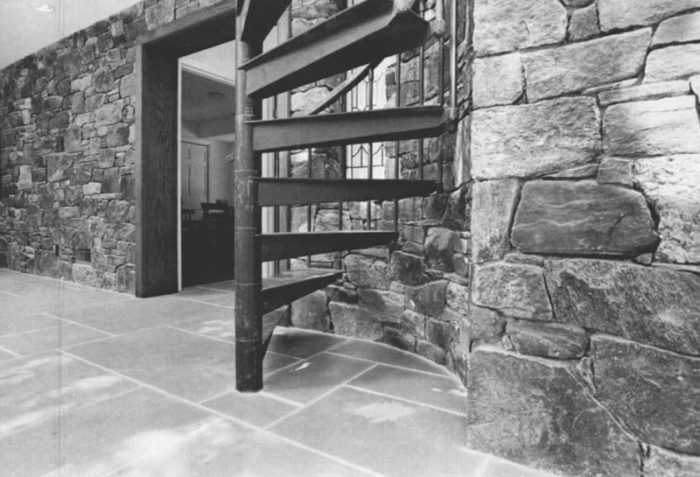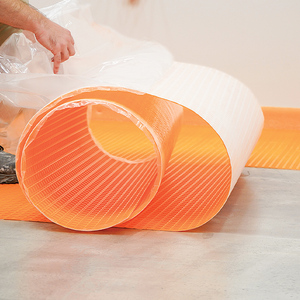Facing a Block Wall With Stone
A good rock supply, tight joints and hidden mortar are the secret to the solid, structural look.

Synopsis: Although this article is chiefly about the technique of facing a concrete block wall with stone it can be applied just as easily to facing a concrete or wood-framed wall. The author describes the approach of one builder whose finished walls show very little mortar. Careful fitting and having lots of stone on hand are the secrets.
Building with fieldstone and building with concrete block represent two extremes in masonry construction. Concrete blocks aren’t especially interesting to look at, but they go up fast, and it’s easy to build a sturdy wall with them. Stone construction demands patience, skill, and above all, lots of rocks. Even with these ingredients, the different shapes and sizes of the material make it tough to keep a wall of stone plumb and strong. Given these considerations, it’s easy to appreciate a construction technique that combines the beauty of stone with the strength and practicality of concrete block.
Larry Neufeld laid up his first stone face to cover a block chimney in a house that he and his brother were building. He had never worked with stone before, but as a general contractor he knew enough about masonry to take on the project. By the time work began on the solar addition, he had developed a technique and style that take the best from both building materials. The finished wall—20 tons of mass facing the windows and skylights on the south side of the addition—shows little mortar at all, and unless you examine the joints carefully, they seem to be dry-fit.
A flexible system
Neufeld’s method uses found stone, and thanks to the New England countryside, he can usually gather what he needs from the fields and stone walls on the owner’s property. Working against a 6-in. thick block wall, he lays up a face 8 in. thick, using odd-sized stones from 2 in. to 7½ in. thick. The void behind the stone is filled with mortar, which sets up around the masonry ties set in the block’s joints.
Neufeld’s system can work just as well with a poured wall or a bearing wood-frame wall, as long as the footing is beefed up to hold the extra load, and there is a mechanical connection between wall and face.
It’s good to begin the job with plenty of stones. As you look for rocks, pick out natural corners, base-course stones with especially flat, broad faces and pieces with unusual colors or mineral formations. Toss these in separate piles before you start building, and each time you sort through your rock, take stock of the sizes and shapes you’ve got. Cataloging like this can make the job go a lot more quickly. But even with a good collection of stone, you can expect to be missing a few key pieces. In the middle of a job, Neufeld often finds himself driving more slowly past stone walls after work, seeking out an elusive corner or curved face.
Before laying up the face, be sure that any wall or ceiling surfaces that will be adjacent to the stones are finished. This means drywalling, paneling, plastering and painting earlier than you normally would, but it’s far easier to do this work before the face goes up.
For photos and information on how to build around curves, corners and opening, click the View PDF button below.


























